The beehold tubes are used to sample substanced from bees entering the hive. They are placed for two weeks at the hive entrance of colony 1 and 3 with different adaptors (colony 1, colony 3).
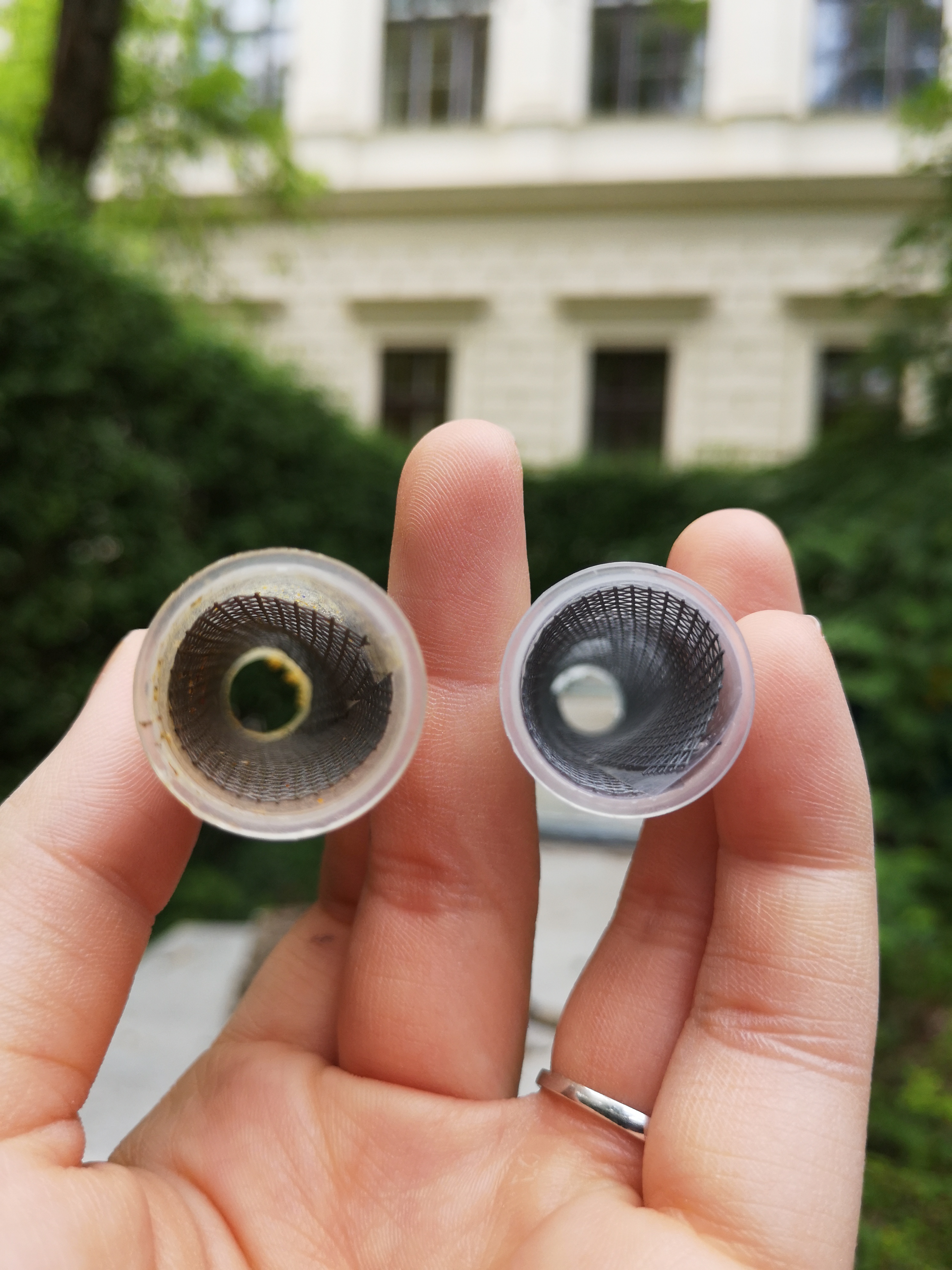

PREPARATORY ACTION FOR MONITORING OF ENVIRONMENTAL POLLUTION USING HONEY BEES
The beehold tubes are used to sample substanced from bees entering the hive. They are placed for two weeks at the hive entrance of colony 1 and 3 with different adaptors (colony 1, colony 3).


INSIGNIA in Denmark are using production colonies. Spring this year has been very special. Early and very intense. Today was a 10 kg day, telling us that several Danish colonies did gain 10 kg of nectar during this one day of flow. This is unusual. We do already now see the first tendency of swarming condition in some colonies. So intense flow also indicate that we will get a swarm year. Next sampling can start in 4 days.
The first sampling window was during the period of 9th to the 12th of May. The point is to kind of choose the good weather forecast day here in the springtime. We did choose Friday but must admit that Saturday would have been the perfect day. We had problems colleting enough pollen, but we did manage. And there are still problems to find surplus of pollen here in the springtime. Seem that it is all used for feed to the brood. We have a nice setup now, after lot of discussion and small changes. On good flight days we have to say that it is crowded at the beeholdtube entrances.
Take a look on the time-lapse video, we did shorten it down to 3 min, but in real life we talk about a sampling time of 30 min. At the end the bees were no so happy, since it was starting to get cloudy and windy. Take a look and get an impression on the work we do at year 1.
Flemming Vejsnæs
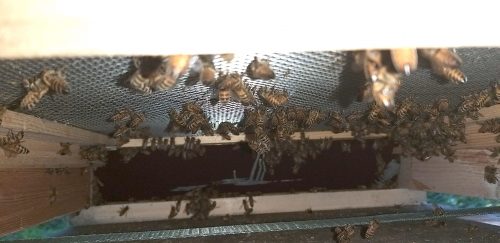
Some nice side effects are discovered within the insignia project. Due to the test setup, the entrance is restricted to an entrance of about 1,5 cm on the entrance. This works very nicely. The bees get used to it within few days. But if you are using an open bottom board, with a netting, making it possibly for the bees to interact, then we did see that some bees, that did not hit the entrance right away, did get stuck under the bottom board. If we did close the open bottom board the problem disappears or if we event made it impossibly for the bees to direct interact, the same happen. Continue reading “Problems – just needs to be solved!”

This spring is different from the last years. Seems that spring is coming earlier an earlier. We had a warm early period. This year everting started 2 weeks earlier. Beekeepers were of course concerned. Will the bees become ready? And yes, colonies looked very nice and winter losses seems to be low. The rape fields are ready now. Dandelion all over. And then we got frost during night time. Not good for the apples! Cold wind from the east. Bees stopped flying! But as always, there are some moments every day, where the bees do fly and collect pollen. Continue reading “Pollen – INSIGNIA need pollen!”

Denmark is a heavy farming country. More than 60% of the surface is cultured landscape by farmers. In May the country is more or less yellow. You will see it when flying over the country. This year we have around 160.000 hectare of rape fields. Rape is a very good nectar and pollen flower give the main flow in Denmark. Rape honey is a very light and creamy honey. Danish customers love this honey. On the other side, it is a very intensive crop. From the putting the seed into the soil to the harvest, on average the rape culture is sprayed up to 6 times with pesticides.
Flemming Vejsnæs

Pollen sampling by citizen scientists (CS) is underway in several countries. How to store the pollen until molecular analysis? How to transport the pollen between the CS and the lab? These are important questions addressed by INSIGNIA. Storage and transportation will influence DNA quality and quantity, both important features for reliable botanical identification via metabarcoding. INSIGNIA compared storage in ethanol with freezing. It turns out that storage in ethanol assures good DNA quality quantity, which makes storage and transportation easier.
Alice Pinto

The first official sampling period is right around the corner, so it is time to talk about the sampling procedures in detail. Citizen scientists sample beebread from colony 1 and colony 3. Originally, the idea was to use a specially developed and homemade so-called “beebread collector” to collect the beebread. Nevertheless, in the last few weeks we concluded that simple straws cut in pieces are a better solution. They are even cheaper than the BB-collector, disposable (no exchange of diseases or pesticides) and easier in handling. The aim is to sample in total 3 g of beebread per colony, which is equivalent to 60 cells or about 5 cm of beebread in the straws.
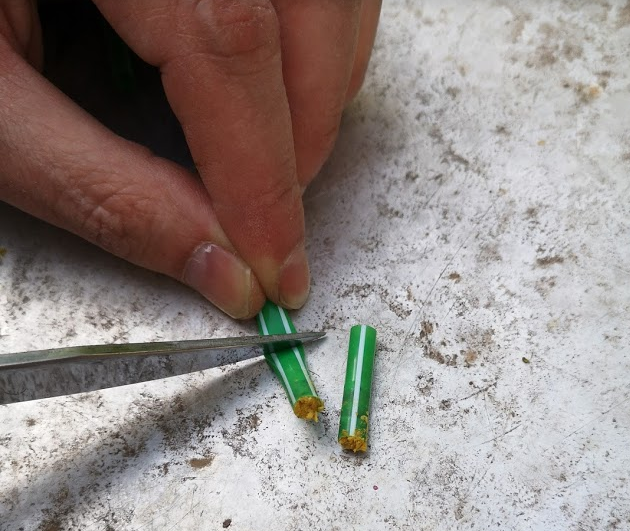
Some blog entries ago we introduced an elegant way of holding the Beehold tubes in colony 3 by inserting 4 holes into a sliding gate. This innovative solution was based on the idea of one of our citizen scientists from Austria. As mentioned in the previous blog posting, bees of colony 1 had or still have issues to get used to the experimental setup but for our citizen scientists this is no reason to throw in the towel. Instead, one of our participants (clever, Roland!) invented a nice, cheap and easy solution to improve the adaption of bees to the new circumstances: firstly, he mounted a landing board to facilitate the traffic of bees; secondly, he installed a mechanism to open and close the pollen trap without disturbing them even if the adapter for Beehold tubes is mounted. Now, that is the magic of citizen science.

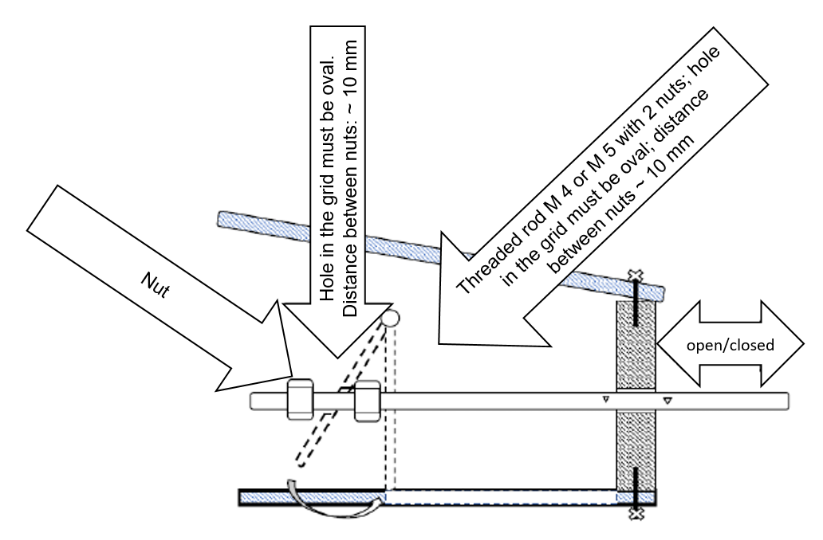
Reminder: in colony 1 all of the four sampling matrixes are tested. Thus, bees not only have to get used to the pollen traps but also to the Beehold tubes and the corresponding adapter. This might be “overwhelming” for some of the colonies and in a consequence, several messages from worried citizen scientists arrived us during the last week. They all reported similar problems, observed in colony 1: bees have issues to find the right path into their colonies and they congregate in front of the hive entrance; bees show increased aggressive behavior; bees use the drone entrance to get into the hive and some of them were also observed to fly into the neighboring colonies.
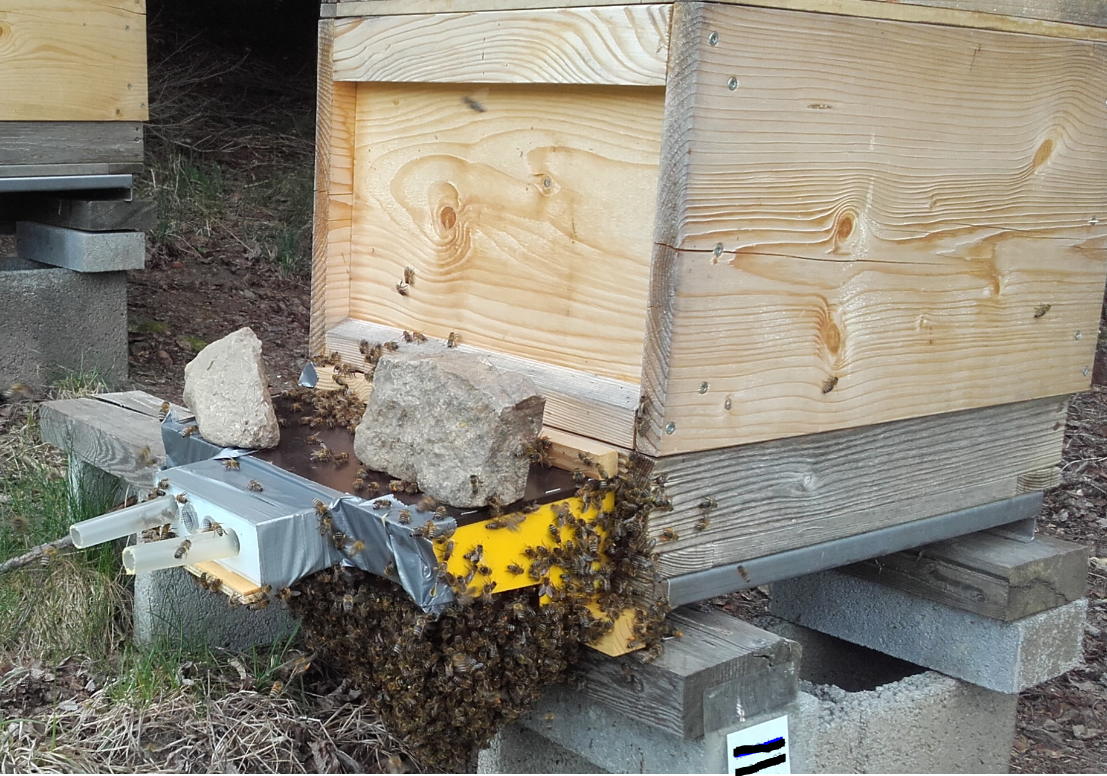
Continue reading “Colony 1 – Bees not finding their way easily”